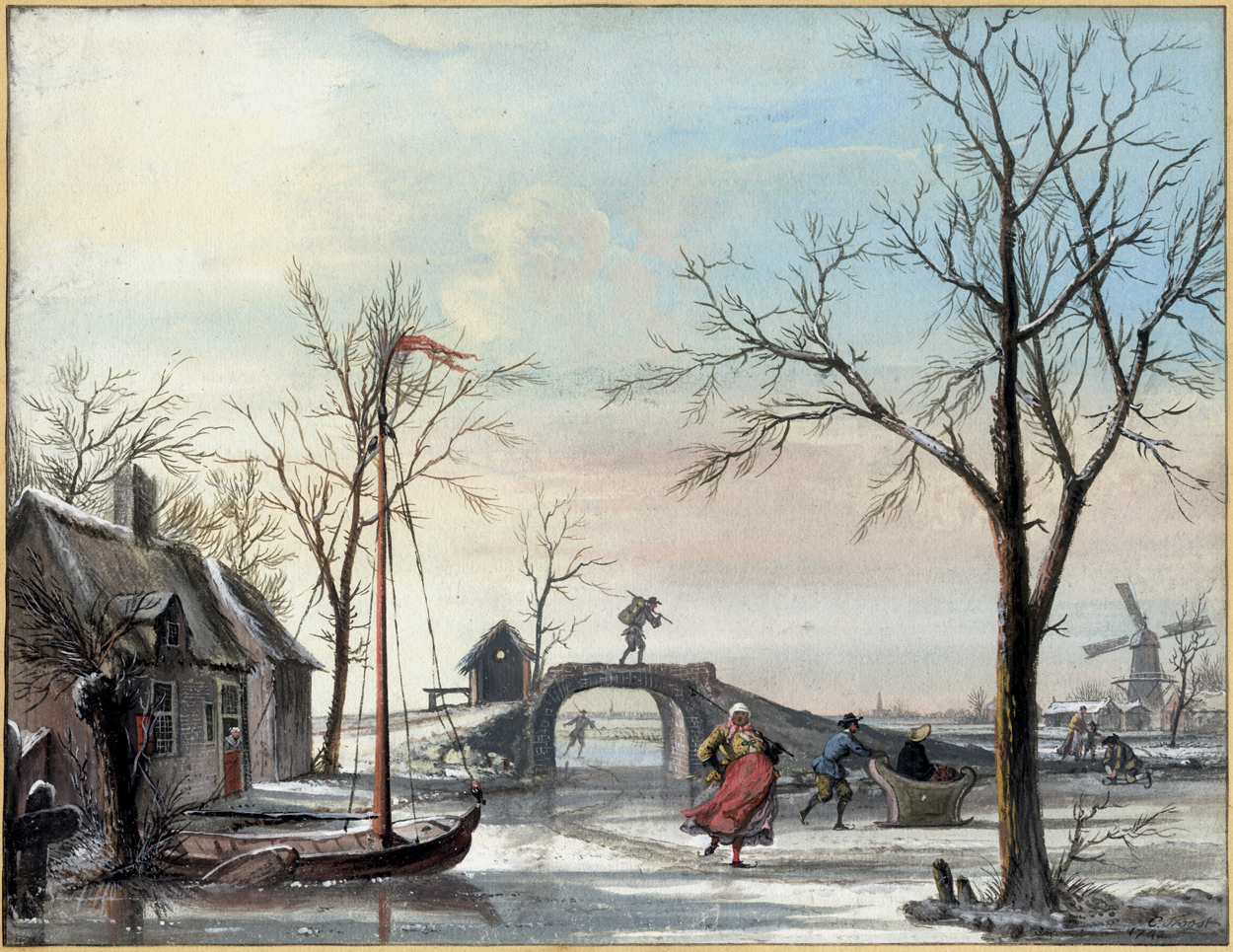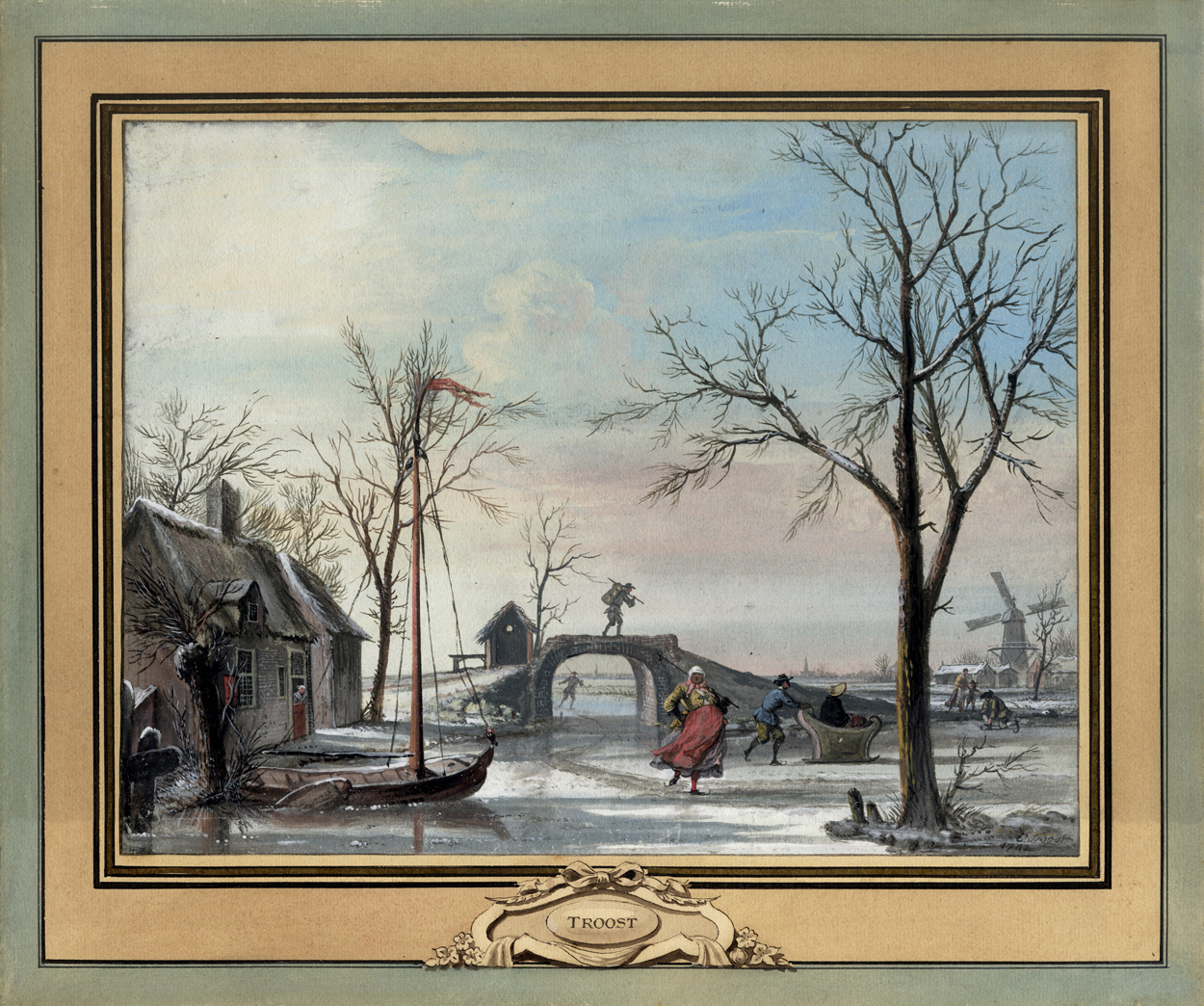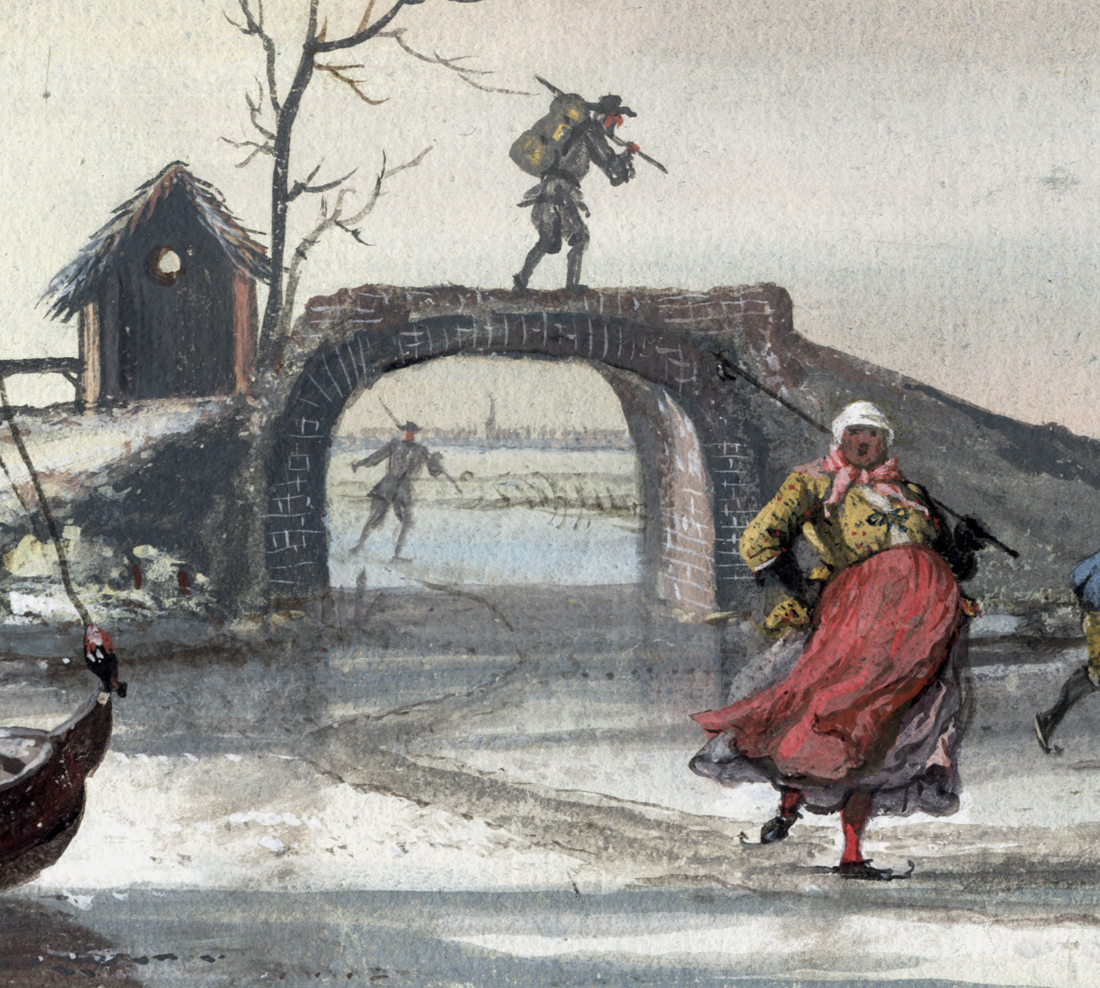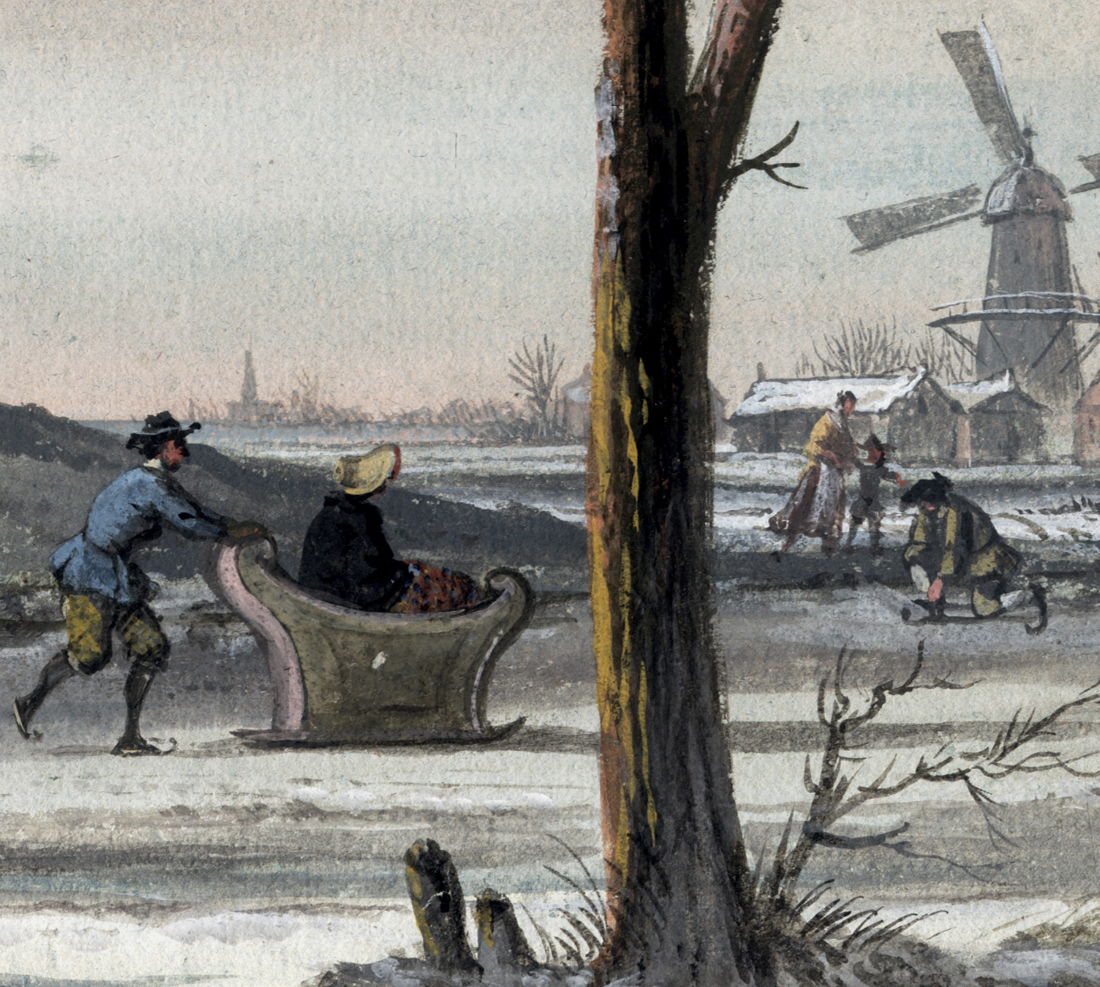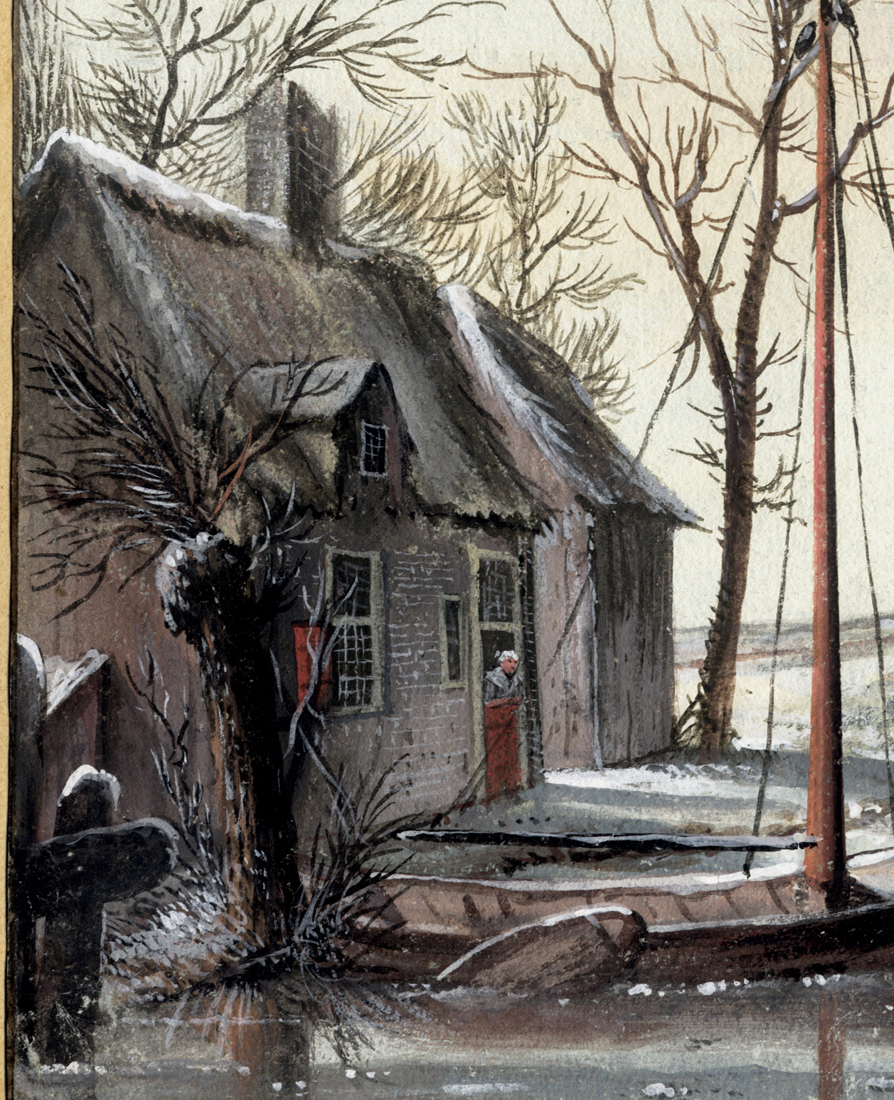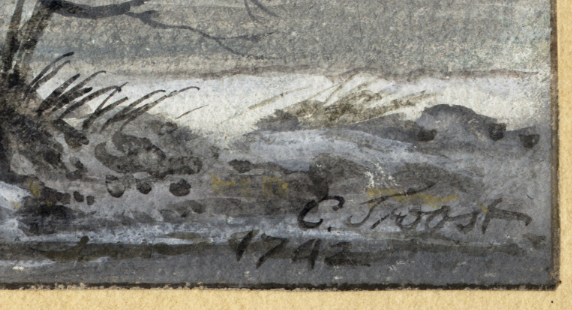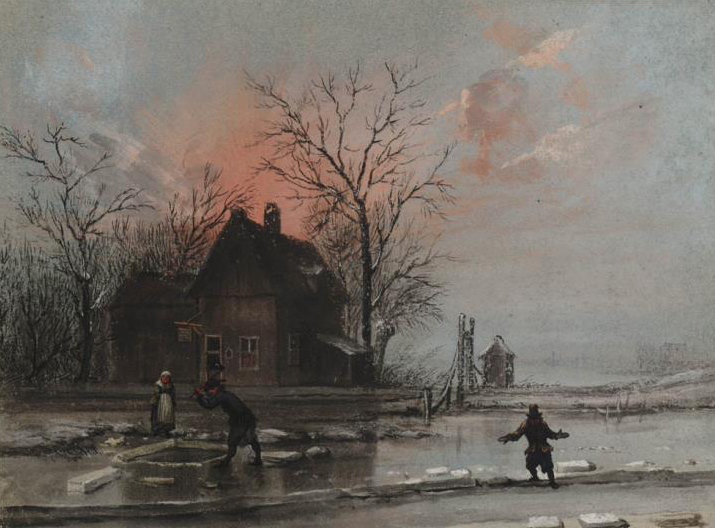CORNELIS TROOST (Amsterdam 1696 – 1750 Amsterdam)
Cornelis Troost (Amsterdam 1696 – 1750 Amsterdam)
Winter Scene with Figures Skating
Watercolour and bodycolour on blue paper, black ink framing lines, 258 x 336 mm (10.2 x 13.2 inch)
Signed and dated ‘C. Troost / 1742’ (pen and black ink, lower right)
Provenance
- With Georges Mayer, 52 Faubourg St Honoré, Paris, in the early 20th century (according to a label on the backboard)
- Private collection, USA
***
This recently discovered large and highly attractive drawing is an important addition to the drawn oeuvre of Cornelis Troost, generally considered the best Dutch painter of the eighteenth century, and certainly one of the few truly original artists of the period.1 Born in Amsterdam, Troost was the son of a bookkeeper and an actress. The young Troost seemed destined for a stage career: he acted at Amsterdam’s Schouwburg theatre from 1719 to 1724. Yet from 1723, his focus was painting. It was in that year that he became an apprentice to portraitist Arnold Boonen. His early masterpiece, the group portrait of the inspectors of the Collegium Medicum in Amsterdam, painted as early as 1724, made Troost an instant success. At first, he mostly painted portraits; in his later paintings the subject was often a scene from a theatre play. In the 1740s, he painted numerous military scenes. Troost lived in Amsterdam his entire life. He was buried at the city’s Nieuwe Kerk.
Troost's extensive drawn oeuvre is characterised by a colourful and especially lively and humerous approach, with drawings usually signed and dated, made for collectors of ‘papierconst’ (works on paper). The eighteenth century is marked by a widespread interest in colour. Artists frequently added watercolour to their drawings and executed them on tinted paper; watercolours and pastels were also extremely popular, and Troost was particularly celebrated for his works in this medium. The French author F.A. Aubert de la Chesnaye-Desbois even described Troost as ‘le prémier Peintre en Pastel qu’il y ait peut-être en Europe’ in his Lettres hollandais ou les moeurs (…) of 1750.
Troost is most famous for his NELRI-series, a set of five works in pastel and watercolour, executed from 1739-40 and preserved in the Mauritshuis, The Hague; the name NELRI derives from the first letters of the Latin inscriptions on the contemporary frames. Troost’s brother-in-law, Cornelis Ploos van Amstel (1726–1798) was one of the leading collectors of drawings of his day, and an amateur artist in his own right. The collectors Jeronimus Tonneman and Gerret Braamcamp also patronised Troost.
Winter landscapes by Troost are exceedingly rare. Troost has masterly conveyed the feeling of a cold yet clear winter day, and has managed to capture the smooth shiny surface of the ice in the foreground with great brilliance. A comparable yet much smaller winter scene, also executed on blue paper, is preserved among the collections of the Teylers Museum, Haarlem (fig.).2 No other winter landscapes by Troost are known, apart from a reference to a ‘Winter’, one of a set of the four seasons in watercolour from the collection of G. and W. van Berckel, sold in Amsterdam in 1761.3 The Teylers winter view is dated to the same year as our sheet, 1742. This year was a particularly active for Troost; many works on paper are known which are dated to the same year, during which Troost lived on the Binnen-Amstel in Amsterdam (the current number 268). His yearly income was estimated at a thousand guilders in the same year, a fortune for the period.
Other work by Troost which were sold by the gallery, are a portrait of a lady and a portrait of a man.
SOLD
1. For the artist, see E. Buijsen a.o., Cornelis Troost and the Theater of His Time: Plays of the Eighteenth Century, The Hague/Zwolle 1993; F. Grijzenhout, Cornelis Troost: De Nelri-serie, Bloemendaal 1993 and J.W. Niemeijer, Cornelis Troost, 1696-1750, Assen 1973.
2. 192 x 261 mm, signed and dated 1742; inv. no. T025.
3. G. and W. van Berckel, 24 March 1761, Album F, No. 10, ‘De Lente met waterverf, door C. Troost’ (‘The Spring with watercolours, by C. Troost)’; No. 11, ‘De Zomer’ (‘Summer’), No. 12, ‘De Herfst’ (Autumn); No. 18 ‘De Winter’ (‘Winter’).
